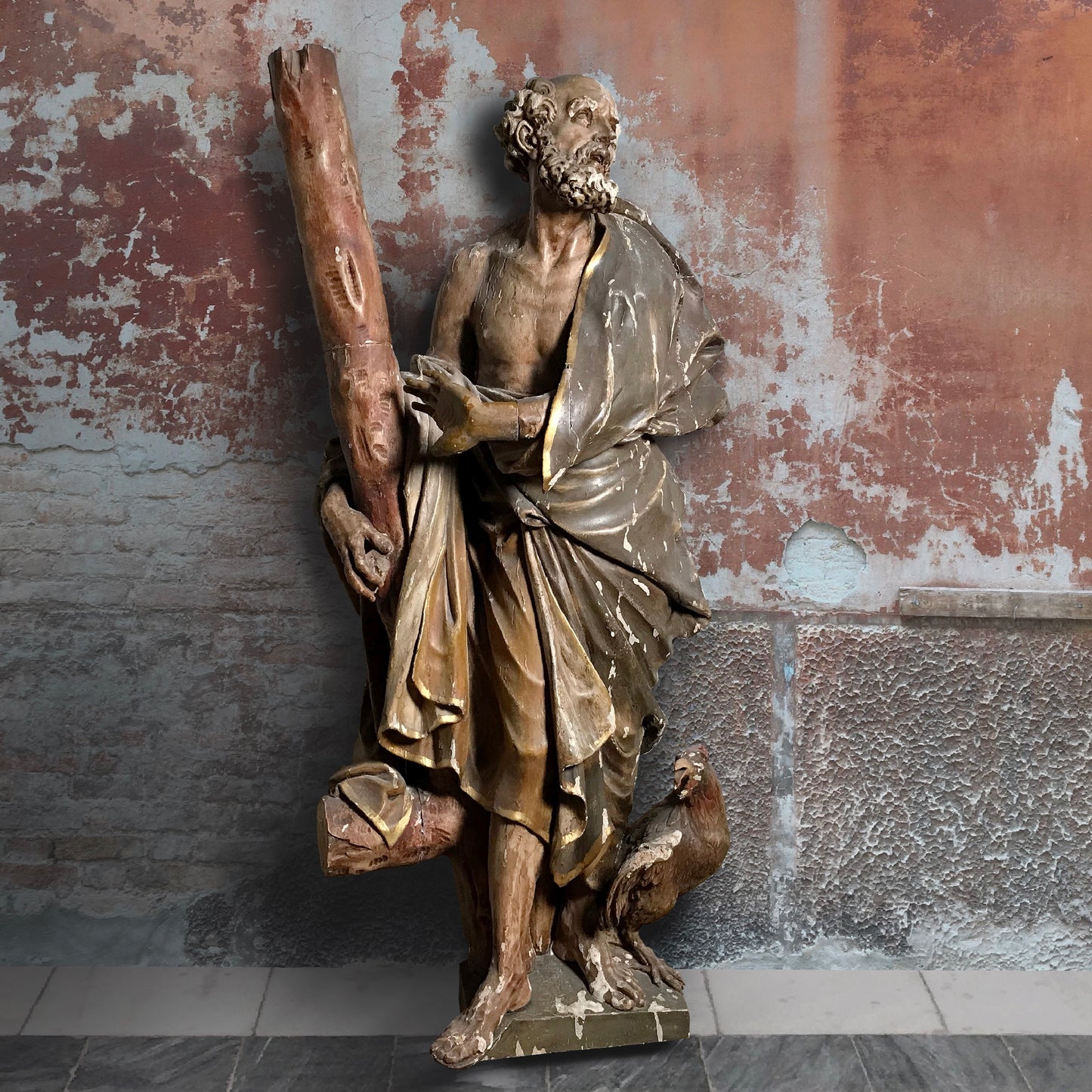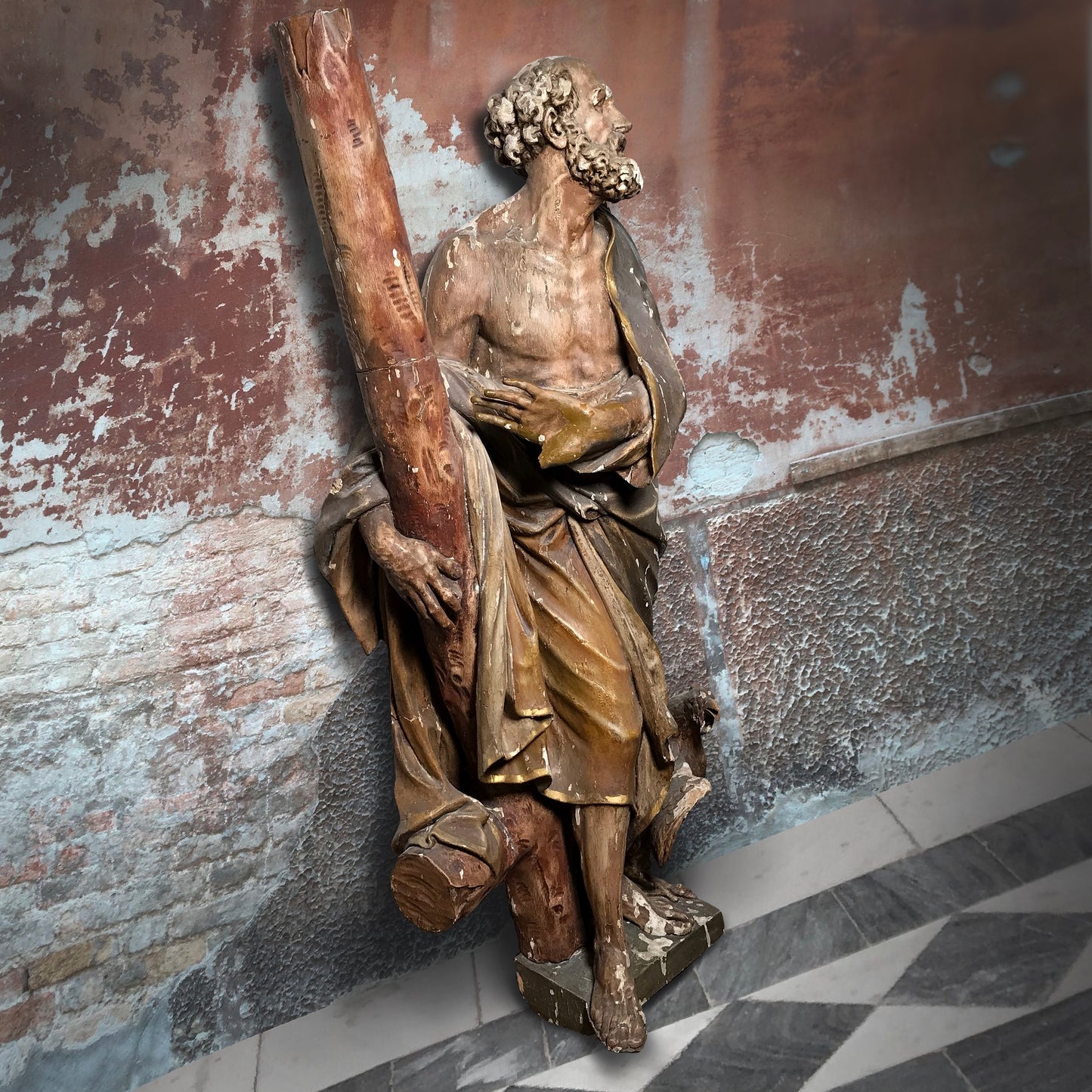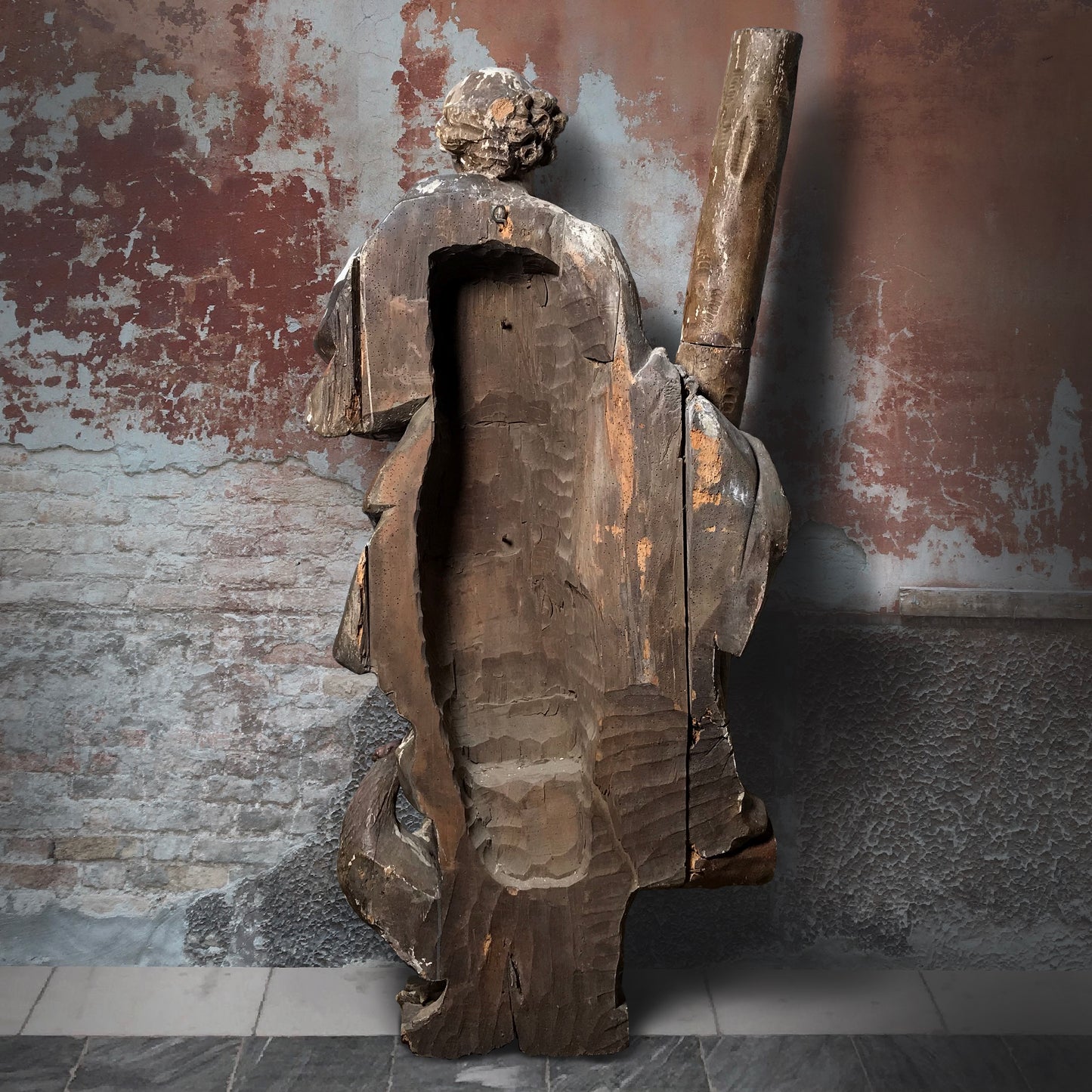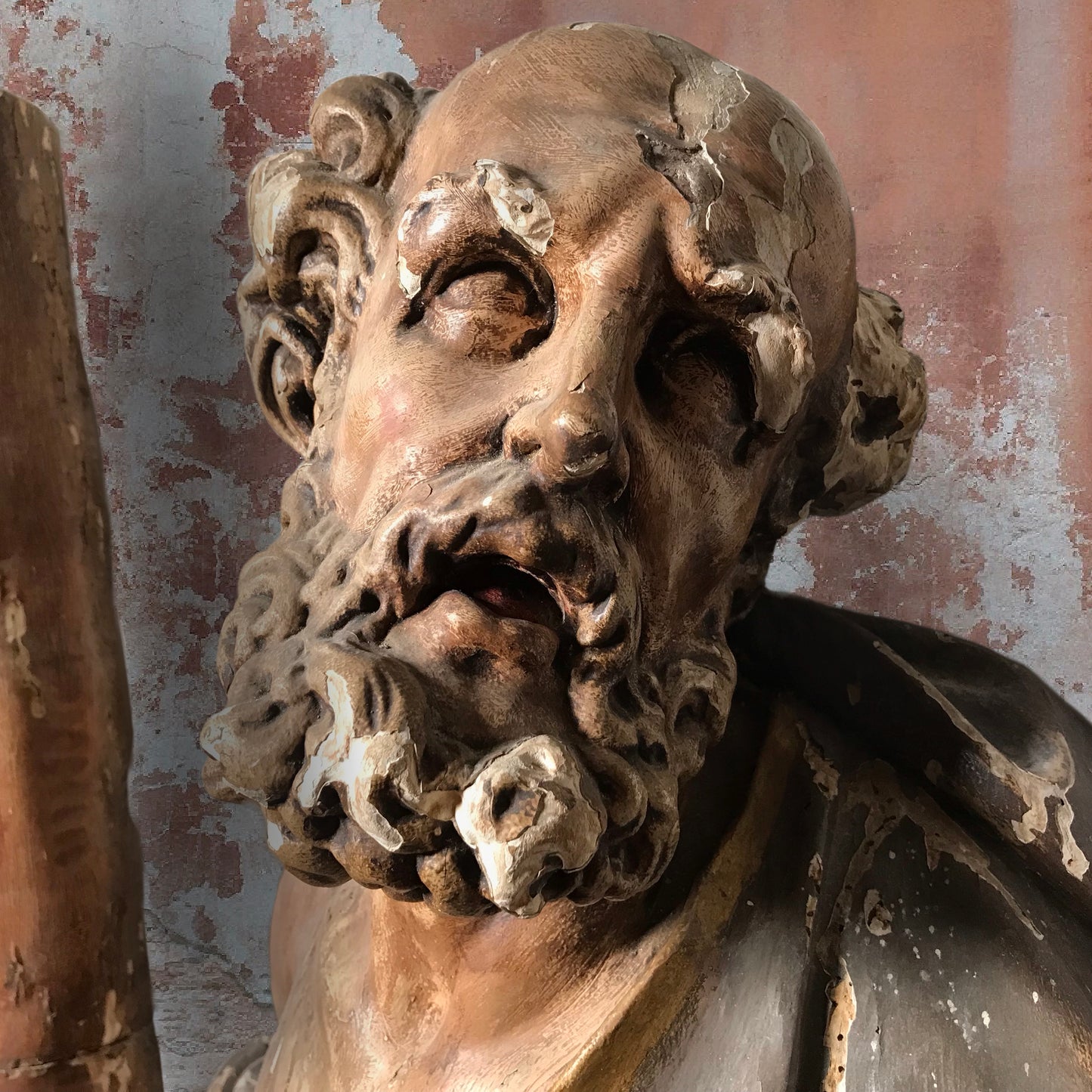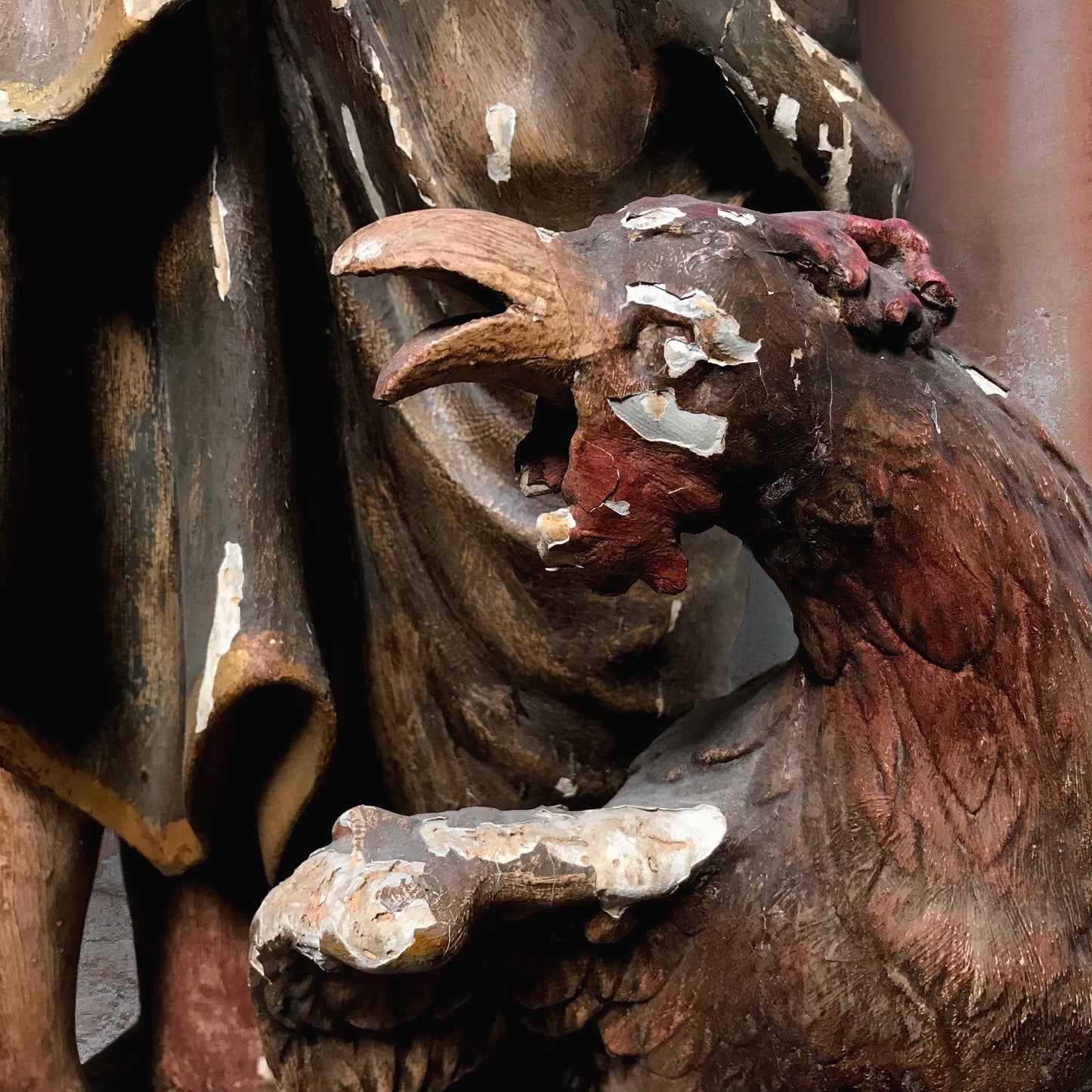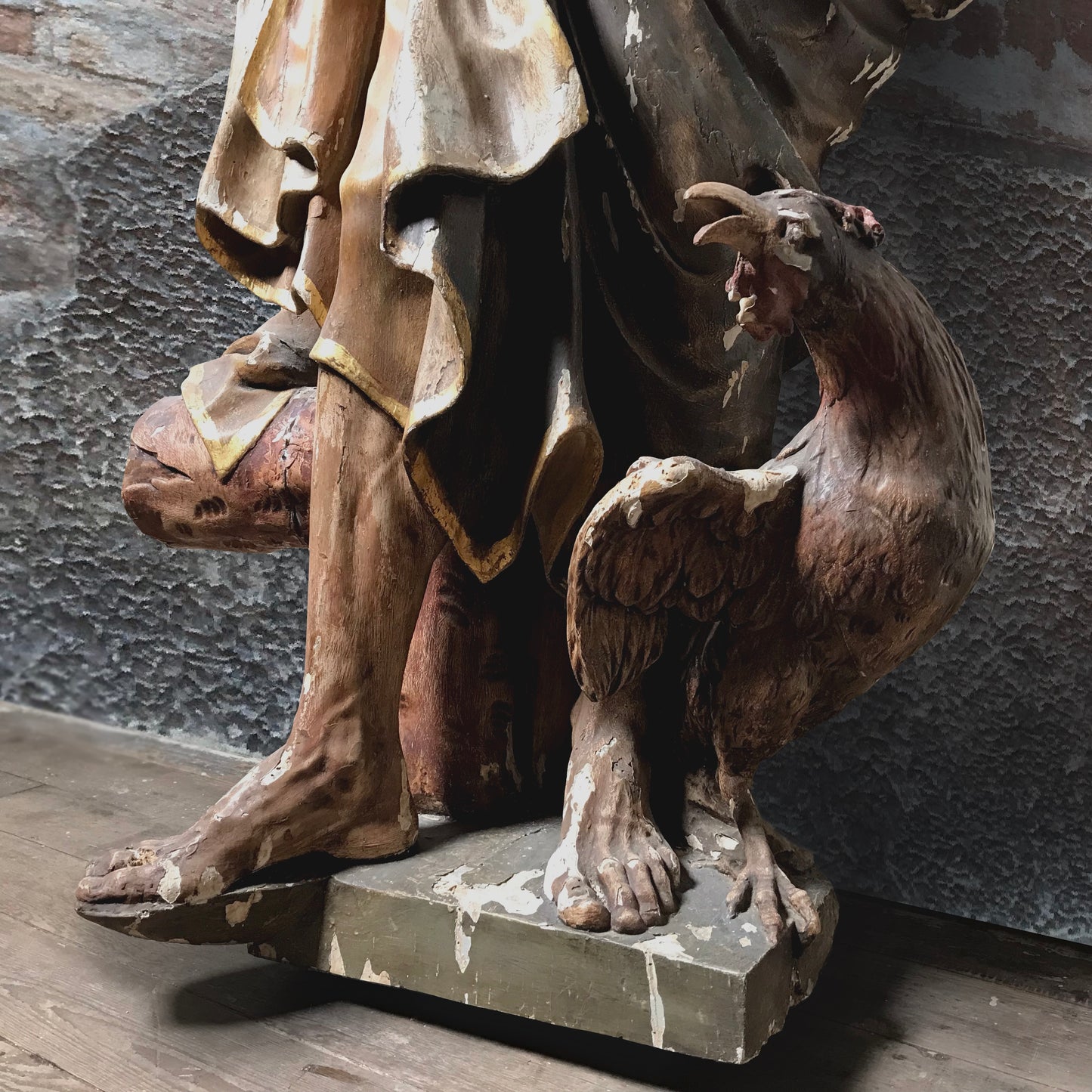Life-size Early 17th C. Baroque Sevillian Spanish School ‘Encarnación’ Sculpture of Saint Peter
SKU: 2SCXY
Couldn't load collection availability
UK Mainland Delivery & Non-Mainland
UK Mainland Delivery & Non-Mainland
* Until Christmas we are offering FREE UK MAINLAND doorstep delivery.
For UK Non-Mainland:
At checkout, please select ‘Pick up’ (not ‘Ship’) to complete your purchase.
You can either:
• Proceed with payment and we’ll send a separate link for delivery, or
• Contact us first for a quote, and we’ll send you a custom order link with delivery included.
Placing items in specific locations can be arranged on request — additional costs will apply. Our trusted fine art and antique couriers, ensuring your item arrives safely and with care.
International shipping
International shipping
International delivery, crating, shipping, and insurance can be arranged on request. We’ll provide a quote based on your needs—additional costs will apply and are payable directly to the shipping company.
You’re welcome to use your own shipping agent, or proceed with our recommended agent using the quote we supply. Payment is made directly to the shipping company.
Alternatively, select ‘Pick up’ at checkout to:
• Collect the item yourself
• Use your own shipping agent from our UK showroom
• Or simply complete your purchase
Contact us for a quote
A remarkable Early 17th Century dramatic life-size Spanish Baroque statue of Saint Peter.
During the late 16th to early 17th Century particularly in Seville, there were numerous workshops producing altarpieces and processional sculptures for churches and religious houses in towns and cities throughout the region.
Known as the Sevillian School of Sculpture - the tradition of Christian religious sculpture in Seville, Andalusia, Spain — began in the 13th century, formed a clear tradition of its own in the 16th century, and continues into the present. The pinnacle of this genre of religious sculpture was held by artist Juan Martínez Montañés (1568-1649) - known as 'the God of Wood' alongside the influential Seville sculptor, Juan de Mesa (1583-1627), who was also a pupil of Montañés during the 17th Century. Later renowned sculptor Juan de Oviedo (1565-1625), joined the workshop of legendary Montañés and Mesa, as did was the versatile Granada-born Alonso Cano (1601-1667): architect, sculptor and painter continuing the school of sculpture into a period known as the Splendid Era.
These particular type of sculptures are known as Encarnación. A sculpting technique employed by the artist Montañes in the 17th-century Baroque period. Used to create life-like sculptures, hence the name, which translates as ‘incarnation’ or 'bringing to life'. After carving and drying for 6 months they are polychromed, gilded, varnished and sanded. These steps are repeated several times until a life-like glow is achieved.
This striking work of art is sculpted from sectional carved wood, gessoed and polychromed. Saint Peter holds an upturned cross and has an animated cockerel crowing at his feet. His back is carved hollow suggesting his placement at an altar or niche within a church.
Depicting “The Denial of Peter”, refers to the three acts of denial of Jesus by the Apostle Peter as described in all four gospels of the New Testament. All four gospels state that during ‘the Last Supper’, Jesus predicted that Peter would deny knowledge of him, and would disown him before the Cockerel crowed the next morning. After the arrest of Jesus, Peter denied knowing him three times, and just after the third denial he heard the Cockerel crow and recalled the prediction as Jesus turned to face him. As the remembered, Peter began to cry bitterly. This final denial and the bitter tears of Peter is known as ‘The Repentance of Peter’.
- Width: 70 cm (27.56″)
- Height: 157 cm (61.81″)
- Depth: 36 cm (14.17″)
